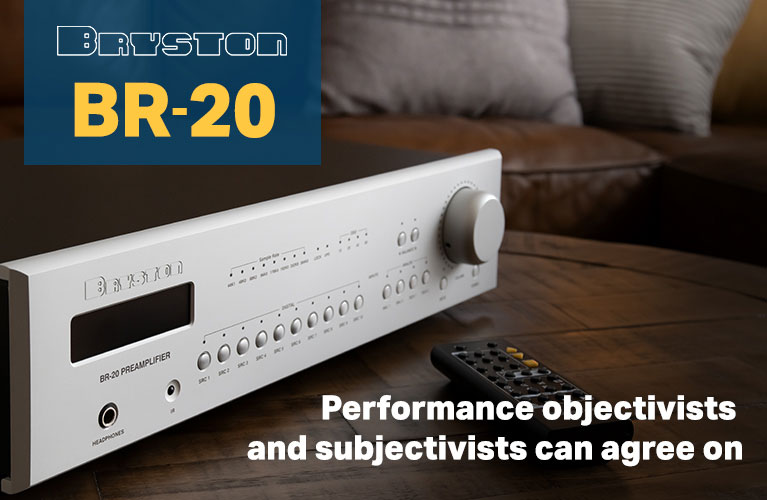Note: Measurements taken in the anechoic chamber at Canada's National Research Council can be found through this link.
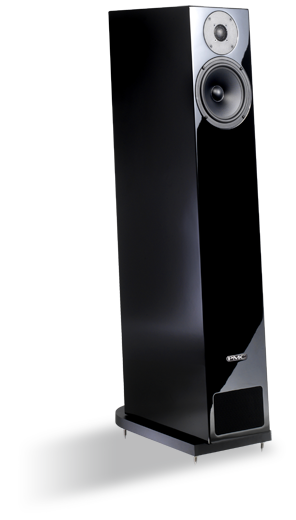
 The UK-based Professional Monitor Company launched their first product in 1991: an active studio monitor called the BB5-A. Today, PMC is entrenched in the professional and consumer markets, making active and passive speakers for a variety of uses. Their newest consumer models are part of the twenty series, officially launched on September 26, 2011, at the British Music Experience, in London, England. The five models in the twenty line were created to celebrate PMC’s 20th anniversary, and the floorstanding twenty.24 is the largest and most expensive, at $5999 USD per pair. There are also two stand-mounted models, the twenty.21 and twenty.22; another floorstander, the twenty.23; and a center-channel, the twenty.C.
The UK-based Professional Monitor Company launched their first product in 1991: an active studio monitor called the BB5-A. Today, PMC is entrenched in the professional and consumer markets, making active and passive speakers for a variety of uses. Their newest consumer models are part of the twenty series, officially launched on September 26, 2011, at the British Music Experience, in London, England. The five models in the twenty line were created to celebrate PMC’s 20th anniversary, and the floorstanding twenty.24 is the largest and most expensive, at $5999 USD per pair. There are also two stand-mounted models, the twenty.21 and twenty.22; another floorstander, the twenty.23; and a center-channel, the twenty.C.
I wasn’t supposed to review the twenty.24 at all -- Jason Thorpe was. But back in March, when they were first delivered to me to be measured, and after I’d inspected and listened to them before starting to measure them, I was so intrigued by their distinctive sound, and so enamored of their appearance and the smell of their beautiful real-wood finish -- yes, a "new-speaker smell," something I hadn’t experienced before -- that I knew I wanted to find out more about them and, ultimately, review them. So the twenty.24s went to the lab, then came straight back to my listening room instead of heading over to Jason’s place. Call it publisher’s prerogative.
I talked with PMC’s cofounder and chief designer, Peter Thomas, in May at High End 2012, in Munich, Germany. By then I’d already had some experience with the twenty.24; he was able to fill in some of the blanks about its design details, and about PMC’s goals for this model.
Description
The twenty.24 is a two-way floorstander with a 1" (27mm) soft-dome tweeter that’s made for PMC by SEAS, of Norway. PMC specifies the tweeter’s upper-end response as 25kHz. The midrange-woofer is PMC-designed and unique to the twenty series. It measures about 6.5" (170mm) across and has a doped paper cone, a rubber surround, and a cast-alloy basket.
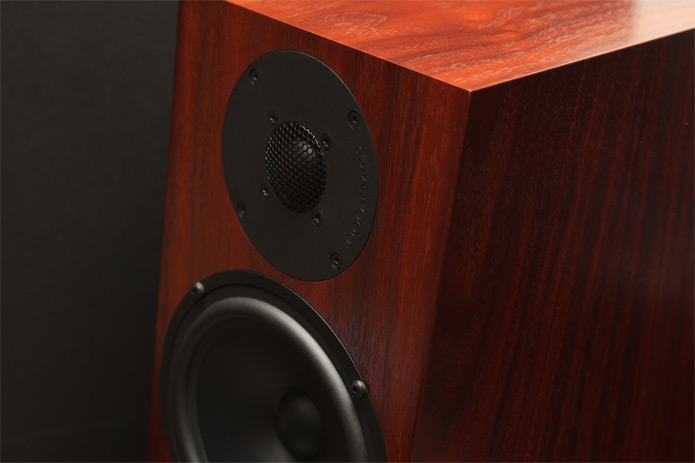
That midrange-woofer doesn’t rely on only its forward thrust to reproduce all the bass frequencies. Behind it, inside the cabinet, is a 3m-long transmission line that ends in a vent at the bottom front of the baffle. The use of transmission lines to extend bass response is something of a PMC specialty -- they’ve been refining the technology almost since the beginning. PMC calls their version Advanced Transmission Line (ATL), and claims that the twenty.24’s low-end response extends to 28Hz -- very low for a two-way design, even a floorstander.
Peter Thomas is a measurement-oriented designer whose design goals are similar to those of the Canadian designers whose work I know well. It’s not just a speaker’s on-axis response that matters to him, but its off-axis responses and overall power response, which boils down to how the speaker energizes the room. Thomas’s experiences have taught him that this not only creates the most consistent tonal balance throughout the room, but it also contributes to wide soundstage spread and precise imaging. As a result of this focus on good off-axis response, the twenty.24’s drivers are crossed over at 1800Hz with fourth-order slopes. This lowish crossover point was chosen in order to most effectively match the dispersion characteristics of the upper range of the midrange-woofer with that of the lower range of the tweeter for the best sound, both on and off axis.
The twenty.24’s claimed impedance of 8 ohms indicates an easy amplifier load, and its fairly high sensitivity, 90dB/W/m, means that not much power is required. Thomas explained to me that PMC not only designs speakers to be relatively neutral and uncolored, but also easy enough to drive that you don’t have to buy an expensive amplifier.
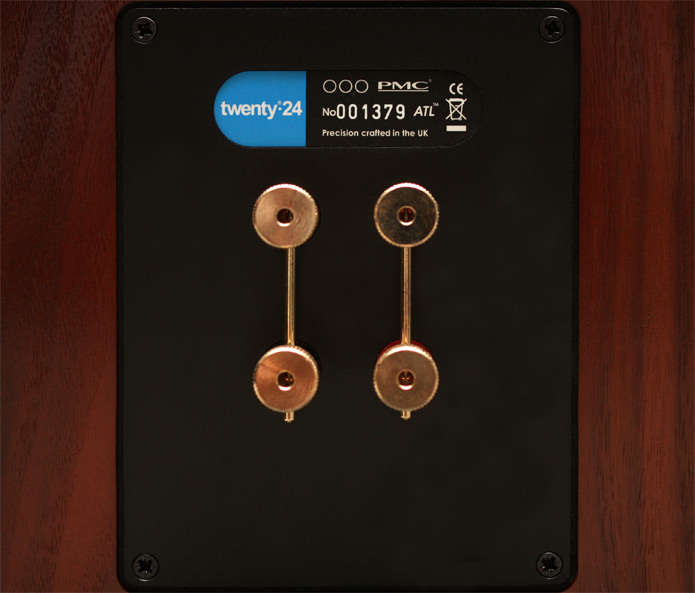
The cabinet, made in the UK for PMC, measures 40.5"H x 9"W x 16.5"D, dimensions that take into account the front- and rear-baffle rake angles of about 5 degrees, as well as the width, height, and depth of the black plinth that attaches to the cabinet’s bottom. Sturdy floor spikes are supplied that screw into the plinth’s bottom, to give the speaker a firm footing on carpeted floors. I found that the spikes made a noticeable improvement in lower-midrange clarity, so I kept them on all the time. On the rear panel are two pairs of good-quality binding posts that allow for biwiring or biamping; the twenty.24 is shipped with jumpers already installed, to accommodate single wiring, which is how I hooked them up -- with Nirvana Audio S-L, my reference speaker cables for almost 15 years now.

The square-edged cabinet would look somewhat dated were the finish of lower quality, and were there not such nice touches as the front and rear angles and the magnetically attached grille. The grille is just over 1/4" thick and covers the entire front panel -- it’s one of the best-looking I’ve seen, and the easiest to use (although it should still be removed for serious listening). Normally, I like a cabinet with some curves and a high-tech finish, such as high-gloss paint, but the Amarone wood finish of my review samples looked so luxurious, and the smell was so charming, that I couldn’t help but be smitten. The two other wood finishes available are Walnut and Oak, which I saw in Munich and thought looked nice -- just not as nice as the Amarone. For those who prefer high-gloss paint, Diamond Black is available. That, too, looked really good to my eyes -- but I’m still nuts about the Amarone.
The twenty.24’s 20-year warranty is four times the industry standard. Clearly, PMC is confident about the quality of their products.
Initial setup, learning, tweaking, improving
I listened to the PMC twenty.24 in two phases: before measuring it and speaking with Peter Thomas, and then afterwards. That proved a good thing; it let me gain a more complete understanding of how to set up the speakers in my room -- which should help you do the same.
I first set up the twenty.24s as I do most speakers, so that their drivers fired pretty much straight at me; in other words, I listened to them on axis. I also usually use an amplifier with respectable power output, so that the speakers aren’t being held back by too little power -- I initially used the Eximus S1, a very refined-sounding, class-D stereo amp that puts out 125Wpc into 8 ohms. The Eximus was powerful enough for the twenty.24s, as expected, but the speaker positions weren’t quite right. The bass sounded very deep and remarkably defined, the meat of the midrange region incredibly smooth and extremely transparent, and the upper midrange equally smooth but just a bit relaxed -- the last was a good thing, because it made harsh recordings just that much more pleasurable to listen to rather than being in-your-face. But -- and this is a big but -- the extreme highs were too bright. The remedy was simple: I ended up eliminating most of the toe-in. The twenty.24s now fired almost straight ahead into the room, which meant that I was listening to them from about 20 degrees off the tweeter axes. This resulted in the extreme highs now sounding very airy and expressive but no longer bright. Our measurements corroborated what I heard.
Later, in Munich, Peter Thomas confirmed that what we’d measured and what I’d heard was what he’d designed into the twenty.24. Directly on the tweeter axis is a significant "bump" in the frequency response that starts at just under 10kHz and continues through most of the highs. But that bump diminishes significantly as you move off axis, and by the time you’re about 30 degrees off axis the twenty.24’s high-frequency balance is quite flat, and continues to taper off the farther you sit to either side. Of course, what’s heard at the listening chair from any pair of speakers is a combination of those speakers’ on- and off-axis vertical and horizontal responses. But while some might think that all of these curves will average out and you’ll end up with the correct response no matter how the speakers are positioned, that’s not the case. If you aim the drivers straight at your ears, the direct sound from the speakers will dominate -- which, in the twenty.24’s case, meant that that on-axis bump was very apparent, as it was for me. Thomas told me that PMC’s recommended setup is precisely what I ended up doing: the speakers fired straight into the room, with little or no toe-in.
Our measurements also corroborated Thomas’s claim of having created a speaker that’s easy to drive, even though our measurement of the twenty.24’s sensitivity, about 85dB/W/m, was below theirs. More relevant to me was the speaker’s impedance, which never sank below 7 ohms and was without any harsh phase angles, and gave me the freedom to also try the twenty.24s with JE Audio’s VM60 all-tube monoblock amplifiers, which are rated at just 60W into 8 ohms. I got splendid sound from the PMCs with these amps -- they added a touch of midrange warmth, something tubes are known for, with no loss of definition in the bass or reticence in the highs. Of course, the Eximus S1 also worked very well. I used both for my listening.
Sound
Several years ago, at a dinner with a group of audiophiles I didn’t know well, I had one conversation I remember particularly well. An older gentleman was going on about how disgusted he was by a vulgar phrase he’d recently read in an audio review. The reviewer, in an effort to describe the degree of resolution a certain product was capable of, said that he could hear "a clam fart" if it happened to be in the recording space and did such a thing. Or maybe it was a frog, or a fly -- I can’t remember. Whichever one it was, I remember smiling at seeing how incensed my tablemate was.
I smiled again while writing this review, knowing how offended he might feel reading this paragraph, because a similar thought came to my mind the moment I played "When I See You," the first track of Greg Keelor’s Gone (16/44.1 FLAC, WEA), through the PMC twenty.24s. Only it wasn’t a clam’s or a frog’s or a fly’s fart that came to mind, but a mosquito’s. I could hear everything, right down to the tiniest sounds that had been made in that recording space. The deep bass drum, the rumble of the room, the faraway echoes, the rich and robust piano, Keelor’s close-miked voice, Sarah McLachlan’s angelic voice accompanying Keelor’s, the distances between the musicians, the awkward recording ticks and pops, and other mistakes that probably weren’t supposed to be captured on tape -- all stood out in stark relief within a huge soundstage that was extraordinarily well defined.
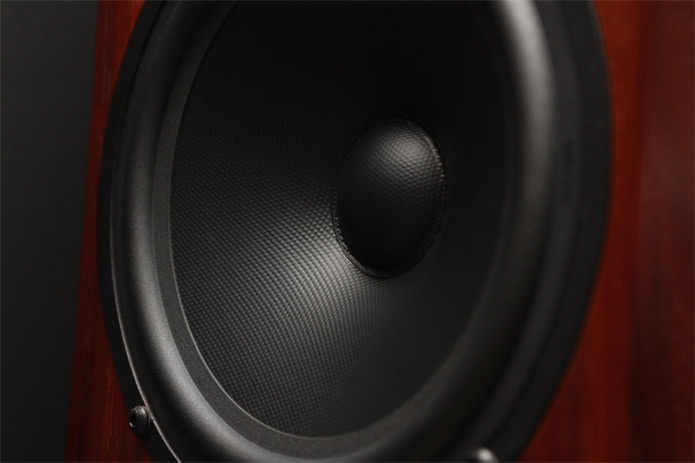
I could pick out similar details in the next song, "Redemption," but this time what really drew me in was how clearly I could hear Keelor’s voice, and how easy it was to gauge his proximity to the microphone -- especially when he got too close to it. And with "No Landing (Lucknow)," the twenty.24s revealed a recording style clearly different from that used for the other two tracks -- Keelor’s voice sounded much farther back in the stage, not nearly as closely miked. Still, I could gauge his distance from the mike and from the musicians accompanying him: distinctly to his left was guitarist Francis Anil, and to his right, cellist Anne Bourne. It was easy to determine each musician’s exact position on the stage, as well as the size of the surrounding recording space. Ditto for Cesária Évora’s Voz d’Amor (16/44.1 FLAC, RAC) -- the stage was extremely wide and very deep on every track, the imaging hyper-precise. These speakers revealed. But it wasn’t all just about soundstaging and imaging. Voices and instruments sounded exceedingly natural and very realistic, with no telltale signs of where the midrange-woofer handed off to the tweeter. The twenty.24s sounded clean, cohesive, and extremely precise.
Nor was this level of detail restricted to the midrange and highs, as in most two-way designs; it extended right down to the bottom of the bass. The twenty.24s reached to about 35Hz in my room -- great response for a two-way, and even more admirable because the bass quality was as good as the quantity. Erlend Skomsvoll’s Prince Igor: Fantasy on a Theme by A. Borodin, from Ferry Tales, features Øystein Baadsvik on tuba and Skomsvoll on piano (16/48 FLAC, BIS). Every low note was rendered with the same kind of immediacy, incisiveness, detail, and clarity as I heard through the mids and highs. I was astonished. In fact, this kind of bass performance was something of a revelation for me in terms of two-way speaker designs. I’ve long championed stand-mounted and occasionally some floorstanding two-ways, for the high level of performance they can provide. Usually, though, I end up tempering my praise with a caveat about the deep bass: nonexistent with stand-mounts, ill defined with floorstanders. The PMC twenty.24 is the first two-way I’ve reviewed that required no caveats at all. What’s more, the twenty.24s’ deep bass and exceptional definition in this region were still there even when I drove them with the JE Audio VM60 tube amps, which indicated that the twenty.24 is indeed easy to drive.
While overall the twenty.24 sounded exceptionally refined and detailed in my room, there were a couple of areas in which some might take exception to it. I mentioned that the twenty.24’s upper mids sounded a touch relaxed -- not an uncommon thing to incorporate into a speaker design. A subtle, broad depression anywhere from 2kHz (or slightly below) and up past 5kHz can take the edge off harsh recordings and make them far more palatable without sacrificing detail. The PMC’s lower mids might also have had a touch of emphasis, which made the speaker sound fuller, but is probably also why I needed the spikes to secure them to the floor, in order to keep that region crystal clear. So while the twenty.24 sounded well balanced and was capable of very high resolution, it didn’t toe the line of strict neutrality.
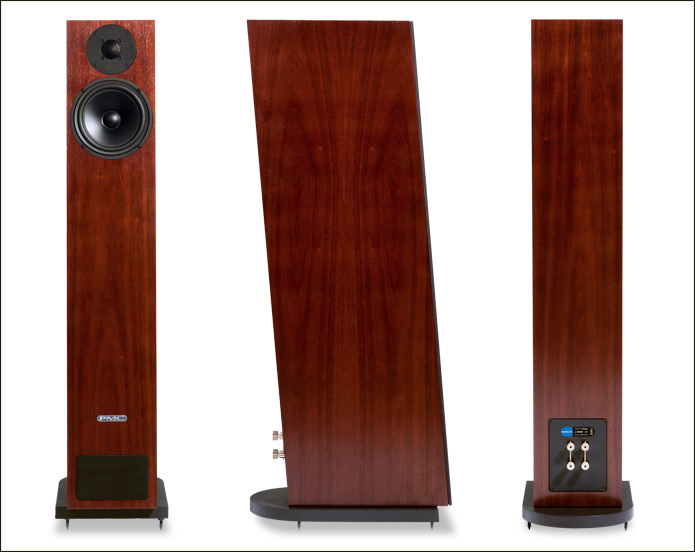
Another thing is how loud the twenty.24 could play -- very, but not excessively so. When I pushed the PMCs beyond what I consider "reasonable" listening levels with some really raucous rock, they held their own respectably well. But I could hear some compression setting in, as well as congestion in the lower midrange and hardness in the highs. The twenty.24 may be the biggest speaker in the twenty line, but it’s still a two-way design of only moderate size; those limits on its output capability still apply.
But those limits aren’t unreasonable. In fact, they’re entirely appropriate, given that the twenty.24 is intended to be used in a living/listening space of typical size, in which a pair of them will sound extremely full and play more than loud enough. In such a setting they’ll also show off what they do best: provide a crystal-clear view into recordings that can rival the best speakers that money can buy.
Comparisons
In the last few months I’ve reviewed a few moderately priced floorstanding speakers: PSB’s Imagine T2, Focal’s Chorus 836 W Prestige, and the PMC twenty.24, respectively priced at about $3500, $4500, and $6000/pair. The 836 W is a three-way, the T2 is what PSB calls a "transitional five-way," and the twenty.24 is a two-way, but with PMC’s ATL technology. These speakers differ greatly in appearance, but there’s plenty to admire in each, including their excellent build qualities.
Their sounds, too, greatly differ. For strict neutrality, shockingly full bass from a small cabinet, sultry-smooth midrange, and outstanding value overall, the Imagine T2 is the clear winner. Consider it Paul Barton’s latest hit in a career full of hits. The Chorus 836 W’s midrange is as smooth as the T2’s, and while it doesn’t necessarily reach any deeper in the bass than the smaller T2, its three larger woofers in a much bigger cabinet make for a far more explosive and visceral sound. The 836 W should impress all who like their music big, ballsy, clear, and dynamic. Size-wise, the PMC twenty.24 comes between these two, but it’s the most expensive of the three, has the fewest drivers, isn’t as neutral as the T2, and can’t play nearly as loud as either. But the twenty.24 is the one the purist audiophile in me likes most, a preference that has mainly to do with balancing priorities and accepting certain tradeoffs -- including the fact that it costs more.
The twenty.24 lacked the sheer output capability of the PSB and Focal, but it sounded just as full, thanks mostly to its transmission-line technology -- the sound was never lightweight. Above all, the twenty.24 excelled at detail and resolution, particularly in the bass, where the PSB and Focal both sound obscured in comparison. But the PMC also wins in the midrange and highs -- there was a transparency to the twenty.24’s sound that neither the T2 nor the 836 W can quite match, regardless of the smoothness of their midbands -- which is precisely why the hardcore audiophile in me favors it. I also liked the fact that, despite the twenty.24’s moderate sensitivity, the pair of them mated well with my tube monoblocks -- not all speakers do. For example, the JEA VM60s were able to drive the T2s and 836Ws reasonably well, but the bass was far looser than with a solid-state amp, which wasn't unexpected.
Conclusions
My first impressions of the PMC twenty.24’s appearance and sound were positive, and throughout the course of the review I grew to like them even more. I ended up liking them enough that if I were in the market for yet another pair of speakers, these are the ones I’d buy; partly for the way they look, but mostly for how they sound.
Once I had the twenty.24s set up correctly, I was rewarded with a well-balanced, near-full-range sound that made long-term listening a joy. I suspect that if you audition the twenty.24s and like what you hear from the outset, you probably won’t tire of them in the long run. I didn’t.
More important, I was floored by the twenty.24’s strengths: bass depth and control that I didn’t think possible from a two-way, and detail and transparency that rivaled the very best speakers out there. I also liked that the twenty.24 was relatively easy to drive, allowing me to enjoy its sound equally well with tubed and solid-state amps, and that its construction mixes old-school craftsmanship with modern design flourishes, resulting in a speaker as distinctive to the eyes as it is to the ears. The twenty.24 makes a great 20th-anniversary showpiece for PMC, proving that the company has learned a thing or two about how to make a great loudspeaker.
. . . Doug Schneider
das@soundstagenetwork.com
Associated Equipment
- Speakers -- PSB Imagine T2, Focal Chorus 836 W Prestige
- Amplifiers -- Eximus S1 (stereo), JE Audio VM60 (mono)
- Preamplifier-DAC -- Eximus DP1
- Computer -- Sony Vaio laptop running Windows Vista and JRiver Media Center 17
- Digital interconnect -- AudioQuest Carbon USB
- Analog interconnects -- Nordost Valhalla
- Speaker cables -- Nirvana S-L
PMC twenty.24 Loudspeakers
Price: $5999 USD per pair.
Warranty: 20 years parts and labor.
PMC Limited
43-45 Crawley Green Road
Luton LU2 0AA, England
UK
Phone: +44 (0)870-4441044
Fax: +44 (0)870-4441045
Website: www.pmc-speakers.com






















